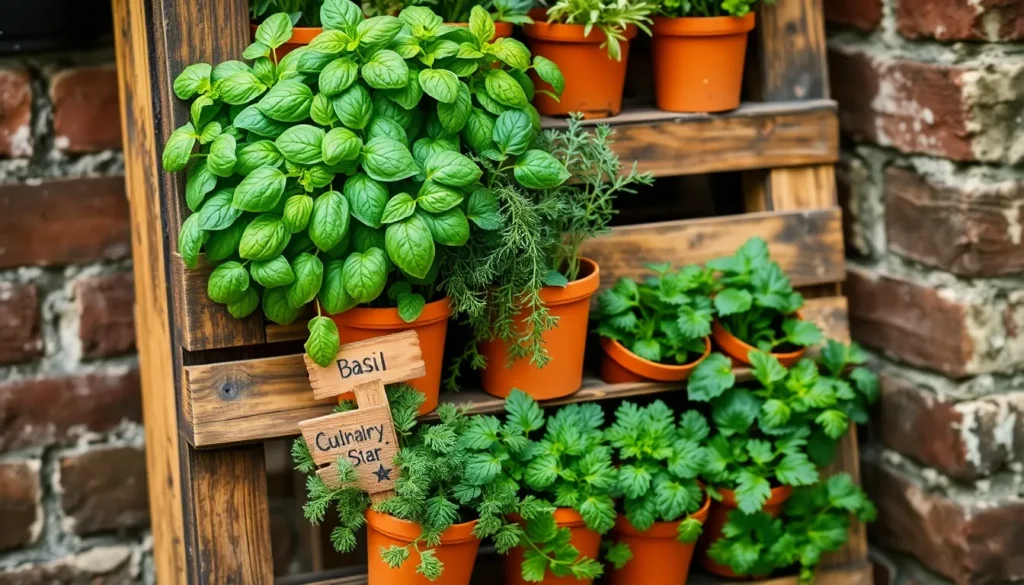Imagine stepping into your kitchen, the scent of fresh basil, rosemary, and mint wafting through the air as you reach for your favorite herbs, plucked straight from your own vertical garden. Whether you’re a novice gardener embarking on your first horticultural journey or a seasoned green thumb looking to maximize space, building a vertical herb garden offers a delightful and practical way to cultivate your culinary essentials.
Vertical gardening isn’t just an innovative way to utilize limited space; it’s a creative outlet that transforms any wall or fence into a living tapestry of flavors. In this article, you’ll discover the essential tools and techniques needed to design your own vertical herb garden, ensuring your fresh herbs are always within arm’s reach.
Gardeners of all experience levels will find valuable insights here, from selecting the perfect spot with just the right amount of sunlight to choosing the best herbs that thrive in vertical settings. We’ll guide you through step-by-step instructions on constructing your garden structure and provide tips on maintaining your lush, aromatic oasis with minimal effort.
Select a Suitable Wall Space
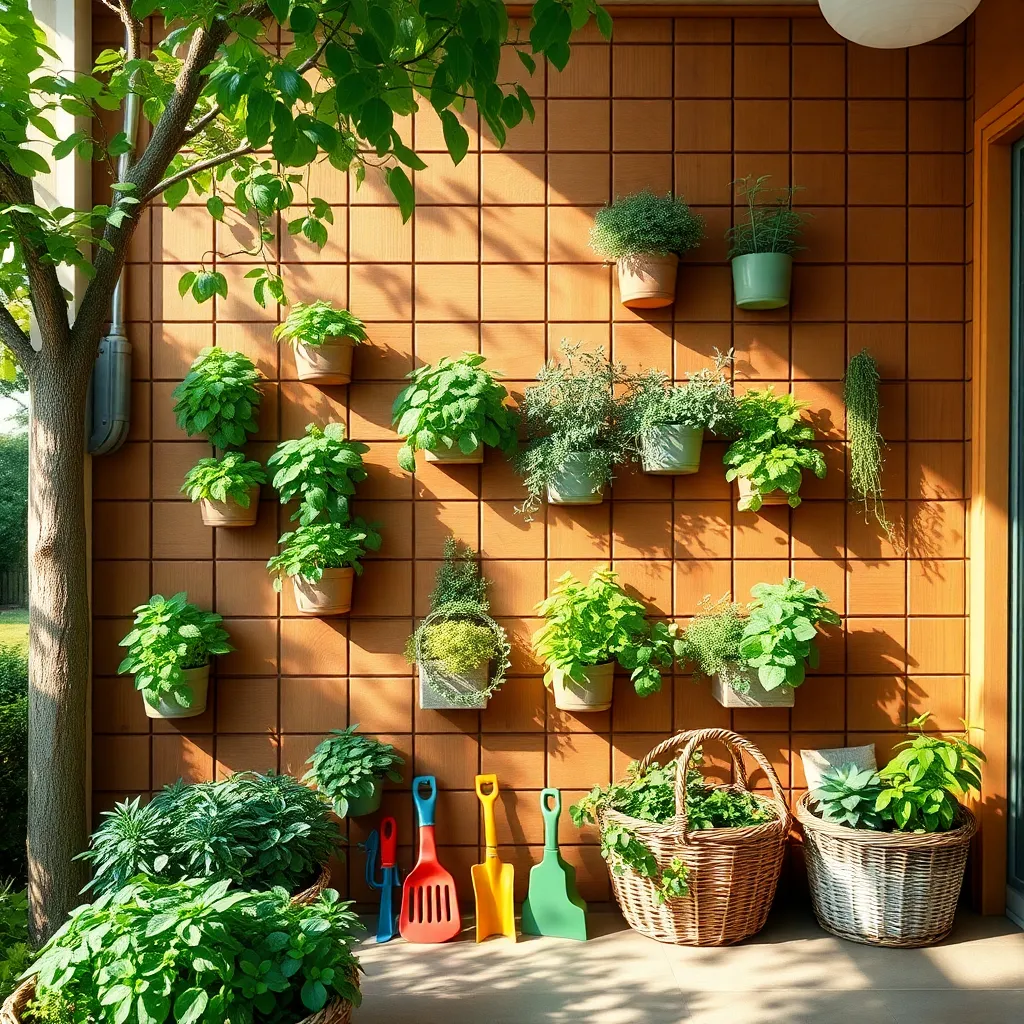
To start building a vertical herb garden, finding the right wall space is crucial. Consider a location that receives at least six hours of sunlight daily, as most herbs thrive in full sun.
If your chosen spot doesn’t get enough natural light, think about installing grow lights to supplement. Positioning is key—ensure the wall can support the weight of the garden structure and containers.
Look for a spot that’s easily accessible for watering and harvesting. A nearby water source will make regular maintenance simpler, especially during the hot summer months.
Consider the material of the wall, as this can affect plant health. Wooden walls are usually preferable since they provide better insulation and help maintain consistent soil temperatures.
Gather Vertical Garden Materials
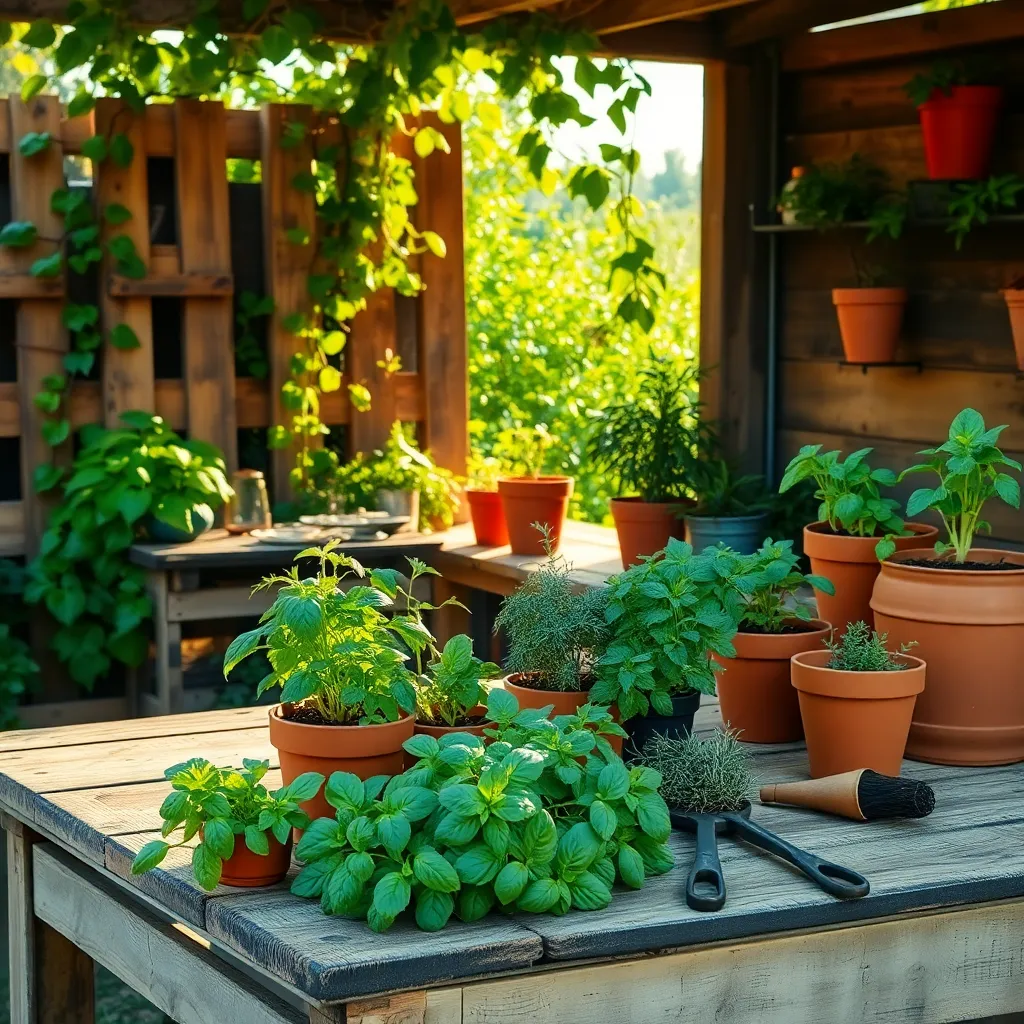
To start your vertical herb garden, you’ll need to gather the right materials. Begin by selecting containers that will hold your herbs securely; options include recycled plastic bottles, wooden pallets, or fabric pockets. Choose containers that have good drainage to prevent root rot, a common issue in vertical setups.
Next, consider the type of soil you’ll use. For herbs, a well-draining potting mix is ideal, often a mix of peat moss, perlite, and vermiculite. This combination provides the necessary aeration and moisture retention for healthy herb growth.
Additionally, you’ll need a sturdy support structure to attach your containers. Materials like wire mesh or wooden trellises work well, providing stability and easy access for maintenance. Ensure your support system can handle the weight of your containers, especially when they are filled with soil and plants.
Watering your vertical garden requires careful attention. Consider installing a drip irrigation system to ensure consistent moisture without over-watering. Herbs generally prefer slightly dry conditions between watering, so adjust your system accordingly.
Assemble the Vertical Structure
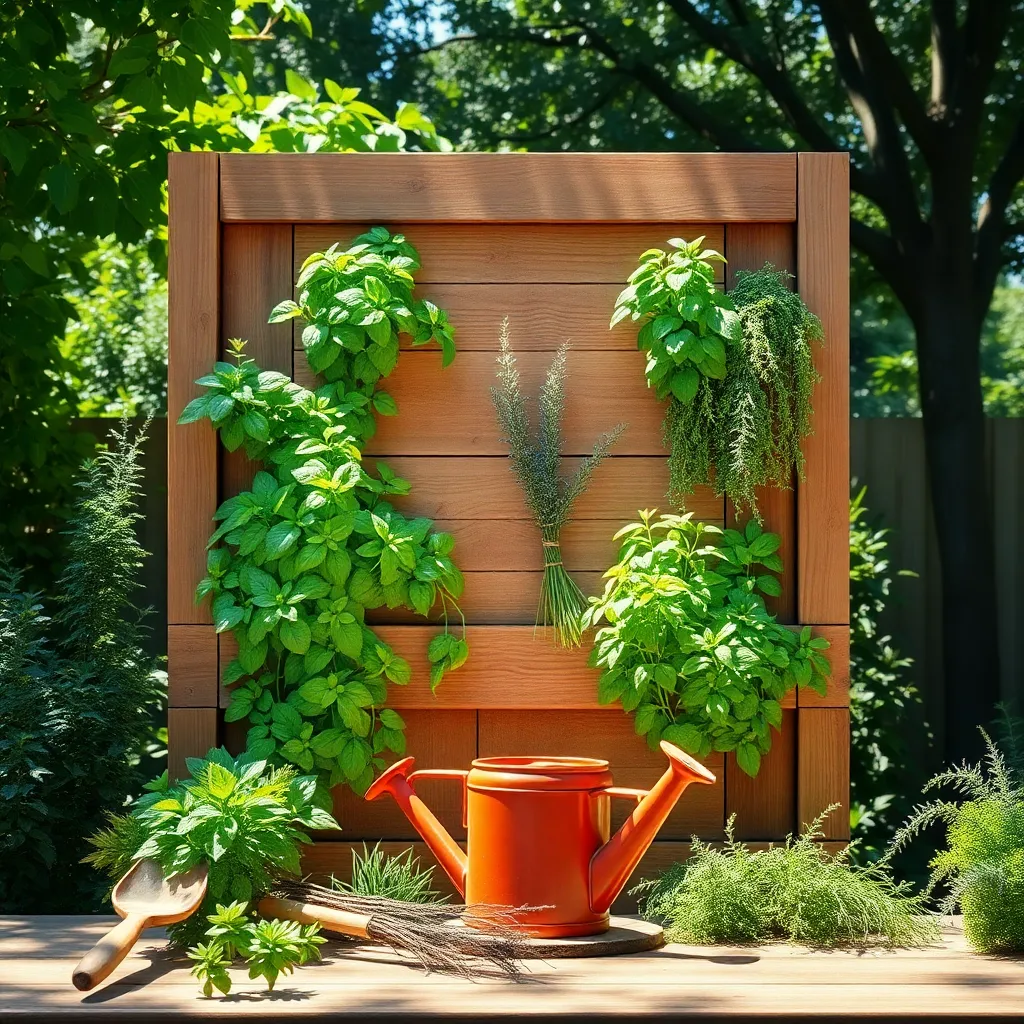
Once you have gathered all your materials, it’s time to start assembling your vertical structure. Begin by deciding on the **location** of your vertical herb garden, ensuring it receives at least six hours of sunlight daily for optimal herb growth.
Securely attach the main frame to a sturdy wall or fence using screws or brackets, ensuring it’s level. This provides a stable base for your herbs, preventing any tilting or falling, which could damage your plants.
For beginners, consider using a **modular system** that allows easy rearrangement of plants as they grow. These systems are particularly useful if you’re experimenting with different herbs and want the flexibility to change their positions for varying sunlight needs.
Advanced gardeners might opt to build their structure from scratch using wooden pallets or custom-cut PVC pipes. Ensure each level of your vertical garden has adequate **drainage holes** to prevent waterlogging, which can lead to root rot.
Plant Herbs in Containers
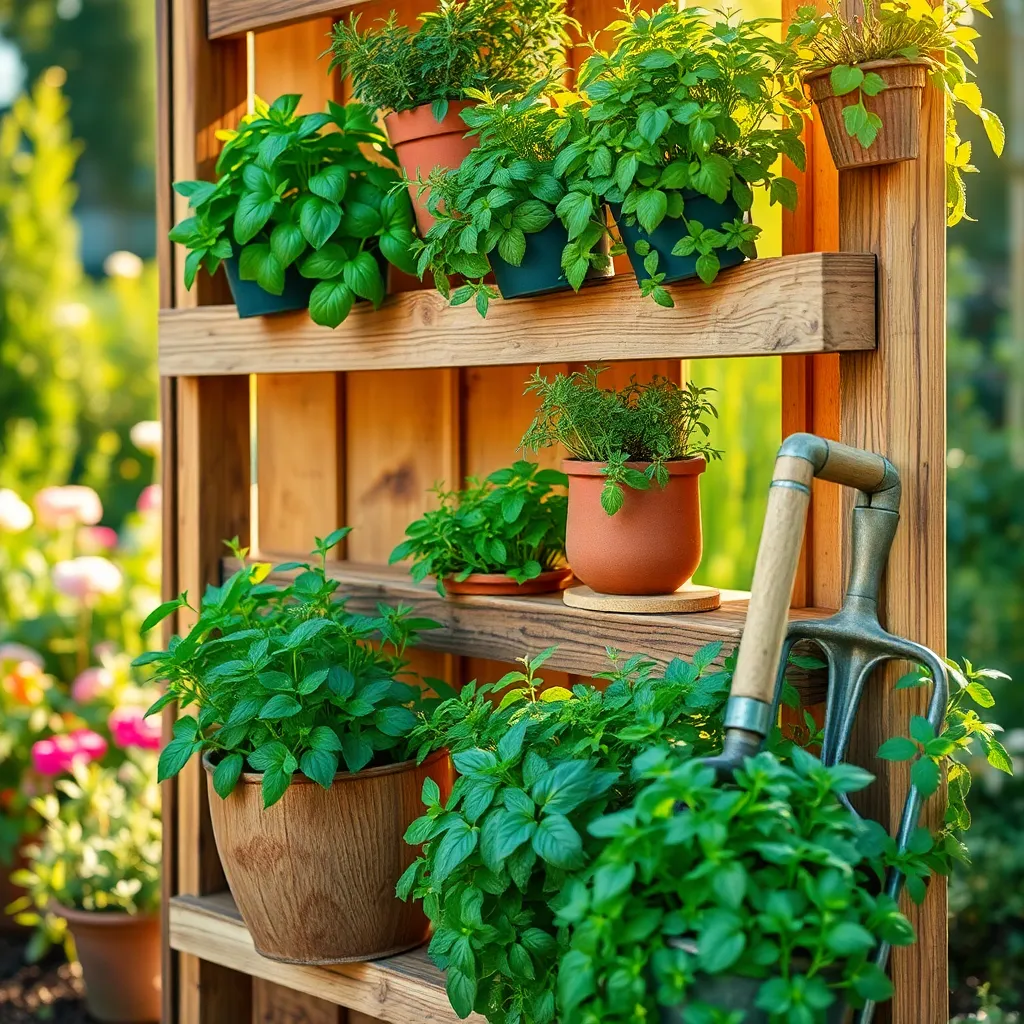
Planting herbs in containers is an excellent way to maximize space in your vertical herb garden. Choose containers that are at least 6-8 inches deep to allow for proper root growth.
Begin by selecting a high-quality potting mix that offers good drainage and nutrient retention. Herbs thrive in soil that is both well-aerated and rich in organic matter.
To ensure healthy growth, water your herbs consistently, allowing the top inch of soil to dry out between waterings. Overwatering can lead to root rot, so it’s crucial to find a balance that keeps your plants hydrated without waterlogging.
Position your containers to receive at least 6 hours of sunlight per day, as most herbs are sun-loving plants. If your vertical structure is indoors, consider using grow lights to supplement natural light.
For those looking to optimize growth, prune herbs regularly to encourage bushier growth and prevent them from becoming leggy. This not only keeps your plants healthy but also provides you with a steady supply of fresh herbs for cooking.
Advanced gardeners might consider installing a simple drip irrigation system to automate watering, especially if your vertical garden includes numerous containers. This can significantly reduce maintenance time and ensure consistent moisture levels.
Install and Maintain Watering System
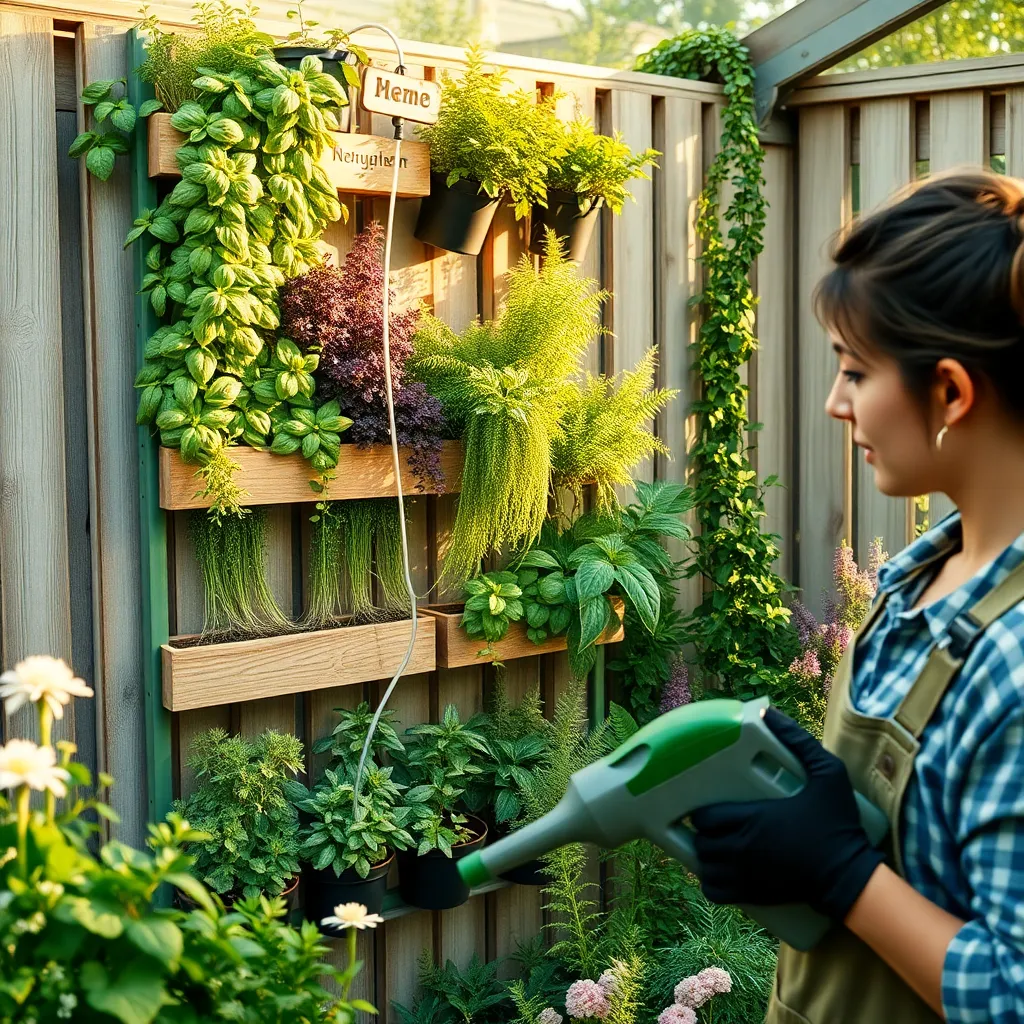
Installing a watering system for your vertical herb garden ensures that your plants receive consistent moisture. Consider using a drip irrigation system, which is highly efficient and minimizes water waste by delivering water directly to the plant roots.
To set up a drip system, start by measuring the length needed to cover all containers. Cut tubing to size and attach emitters near each plant to ensure they get adequate water without oversaturating the soil.
Incorporating a timer can automate watering schedules, which is especially helpful for those with busy lifestyles. Set the timer to water during early morning or late afternoon to reduce evaporation and ensure optimal absorption.
Regular maintenance of your watering system is crucial to keep it functioning efficiently. Check for clogs or leaks in the tubing monthly and replace components as necessary to maintain consistent water flow.
Conclusion: Growing Success with These Plants
As we draw our exploration of vertical herb gardens to a close, it’s clear that nurturing relationships—whether with people or plants—thrives on mindful practices. First, we embraced the importance of communication, akin to understanding each herb’s unique needs. Then, we delved into consistency, ensuring regular care and attention foster growth. Trust was highlighted as a vital component, much like trusting the process of nature. Patience, our fourth key concept, reminds us that both herbs and relationships flourish over time with gentle perseverance. Lastly, adaptability encourages us to respond to changing conditions with creativity and resilience.
Now, let’s turn inspiration into action: choose one relationship in your life that could benefit from a little extra care—perhaps a friend, partner, or even yourself—and commit to nurturing it with one of these principles today.
Remember, to continue cultivating enriching relationships, save this article as a handy reference. Bookmark it now to revisit these insights whenever you need a gentle reminder of how to grow together harmoniously.
Looking ahead, by integrating these practices, you’re not just planting seeds for a thriving garden but also for lasting, flourishing relationships. Here’s to your journey of growth and connection!

